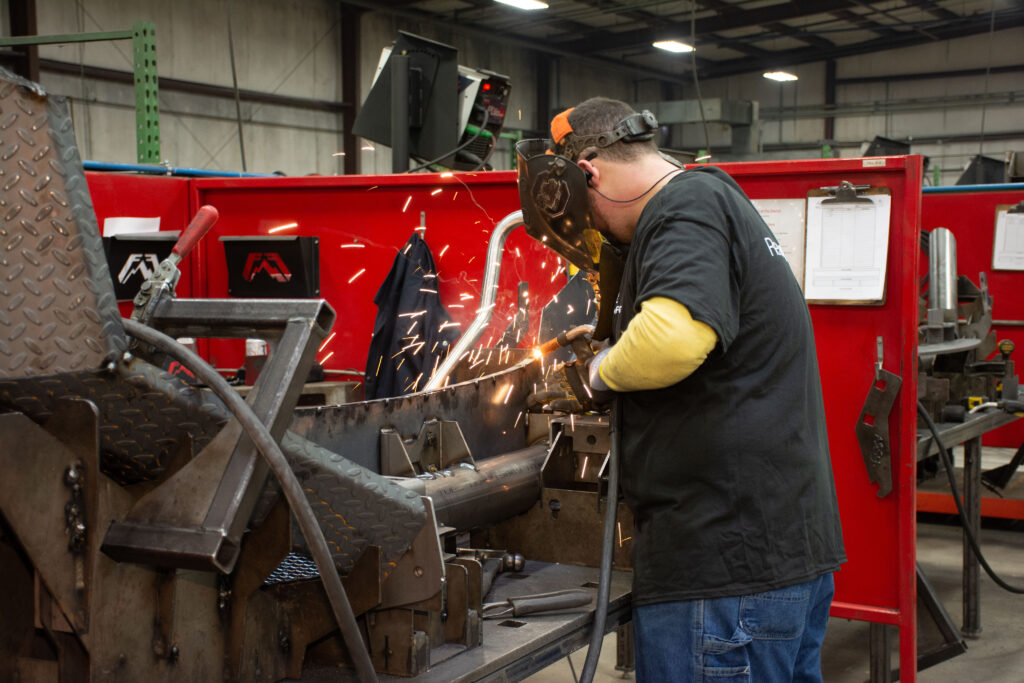Here’s what you need and how to start welding today
Welding jobs are on the rise due to a combination of factors from technological advancements and an aging workforce to evolving construction methods. Because this growth isn’t expected to slow anytime soon, now’is a great time to consider a career in the field.
We’re exploring everything you need to know about professional welding and the essential equipment and qualifications you’ll need to get started. Read on to learn more.
Taking a closer look at a career in welding
Welding is the process of joining two or more pieces by using intense heat and pressure. This method is commonly used for metals, but it can also be applied to materials like thermoplastics or wood. Welders are a major part of the U.S. economy. Approximately 70% of all manufactured products involve welding at some point in their creation, according to a report from the Northeast Advanced Manufacturing Consortium.

Why pursue a career in welding?
The American Welding Society (AWS) reports that there are an estimated 770,000 welding professionals working in the U.S. as of 2023. The profession is expected to remain in high demand both now and in the future because of an aging workforce, industry expansion, and a widening skills gap. In fact, the AWS report further reveals that 90,000 welding jobs will be needed annually, on average, until 2027. Because skilled welders are imperative to meet future demand, the job outlook for this career in the coming years is very healthy — opening the doors for you to begin a fulfilling journey in the field.
The manufacturing industry has a significant demand for skilled welders, with the U.S. Bureau of Labor Statistics reporting that 300,000 of these individuals are employed in this sector alone. This ensures excellent prospects for career growth and higher earnings. Additionally, a range of other industries — from transportation and healthcare to construction and aerospace — also rely on a strong pipeline of welders.
Everything you need to start professional welding
With a positive outlook for a career in welding in mind, you’ll need the right equipment to get started. Here’s a list of the specific tools and gear professional welders require for their work:
1. A welding machine
No welding setup is complete without the welding machine itself. An MIG (Metal Inert Gas) welding machine is the most commonly used and can easily be found at a home improvement or hardware store. However, there are also TIG (Tungsten Inert Gas) and Stick welding machines to consider. Choose the option that suits your intended welding applications and budget.
2. Safety gear
Welding professionals know that safety should always be a priority. Protect yourself by investing in high-quality safety gear, including a welding helmet, welding gloves, a flame-resistant jacket, and steel-toed boots. These items will quickly prove essential to keeping yourself safe from sparks and debris, UV rays, and potential burns.
3. Welding electrodes and wire/welding gas
Depending on the welding method you choose, you’ll need electrodes (for Stick welding) or welding wire (for MIG and TIG welding) to support the fusion of metals. Make sure you select the right material and diameter for your specific welding job.
Shielding gas, such as argon or CO2, is used in some processes like MIG and TIG to protect the weld from atmospheric contaminants. Ensure you have the correct gas and a regulator to control the flow while working.
4. An angle grinder
Angle grinders are invaluable tools used for cutting metal, smoothing out welding imperfections, and preparing metal for welding. Make sure you have several cutting discs, sanding discs, and a flap wheel on hand for clean and smooth welds and a polished result.
5. Welding pliers and clamps
Specialized welding pliers come with features like wire cutters and tip cleaners, which come in handy for extending the life of your equipment and promoting successful operations. Welding clamps can also be leveraged for more accurate and stable welds by holding your workpieces in place securely.
6. Safety glasses and a respirator
A helmet and welding gloves are critical safety gear to have on hand, but it’s equally important to have safety glasses and a respirator available for added protection. Industry-certified glasses are essential to keep your eyes safe, while a respirator is a great way to filter out harmful fumes or small particles that can form when you’re welding.
7. A fire extinguisher
Because of the sparks, hot slag (i.e., droplets of melted metal), and torch flames associated with welding operations, welding-related fires can be common. Keep a fire extinguisher nearby in case of any unexpected sparks or fire hazards.
8. Training and reference materials
Invest in educational resources such as welding manuals, guides, and training courses to support ongoing skill development and serve as valuable references in your day-to-day work.
Launch your welding career with support from a trusted partner
As the demand for skilled welders remains high across industries, it’s the perfect time to become a welder — and Employbridge can help.
At Employbridge, we’re dedicated to connecting qualified talent with rewarding positions at leading companies across the nation. With competitive salaries, comprehensive benefits, and an emphasis on well-being, we’re here to help you jump-start a successful and fulfilling career today.
If you’re ready to take the next step in the field of welding, discover all of the career opportunities available at Employbridge, or contact your local branch to learn more about how we can help you.